How To Audit Your Team’s Time And Measure Productivity
Managers who need to measure employee productivity can try a team time audit. Learn now a time tracking tool like Timeneye can help with that.


We all have a 24-hour day, not an hour more to add or one to cut off.
Sometimes the day seems too short to get all of our to-do list things done.
Time management is the key if we do not want to postpone activities, work extra hours or overthink, in our free time, about what needs to be done.
Mastering time is not easy and, often, we do not even know what exactly time management means and how to apply it to our working and private life.
Indeed, we wrongly tend to think of multitasking as a great way to save time and check off activities on our to-do-list.
Being good at time management is a matter of attitude and personality traits and they take time, hard work, and patience to change, even slightly.
When we talk about time management it is essential to distinguish personal characteristics, time management skills, and time management techniques.
It is well known that the environment in which we live, the family and people that surround us, added to some biological traits, shape our personality.
Our characteristics are difficult to get modified and they need great effort and discipline, other than motivation.
Soft skills and life skills are the ones related to personality traits when we talk about time management.
Soft skills mostly regard how we interact with people (social and communication skills), while life skills are more about the challenges we face in life.
In life skills, we find our ability to deal with emotions and stress levels, problem-solving, creative thinking, decision-making, etc., etc.
Hard skills are more related to time management techniques but they are also very important when we talk about personality characteristics and time management. Hard skills usually include diligence, the propensity in being organized, flexibility, etc.
If you are not a pro in effective time management and you have the impression to never have enough time or be in control of your time, before striving to change your personality, you need to, first of all, acquire time management skills. by getting also a little help from time techniques, such as Time management tools and time tracking software like Timenye can be considered time techniques and offer great help.
Skills and techniques combine and support each other but skills are the ability to do something.
Time management skills mostly are the capacity to be fully focused on a task, in control of your time, and the ability to avoid wasting time and procrastinating. How? Being able to prioritize important tasks and urgent tasks, and plan and set goals.
Techniques embody how a skill gets acquired.
They assume the important role of helping the person to get into the process of acquiring the knowledge that s/he wishes to have.
To better time management, techniques find “practice” in time management methods and tools and they help the user to better manage important tasks with focus, meeting deadlines, and being on time.
Practical examples of Time management techniques are to-do list, the Pomodoro timer or the so-called Pomodoro technique, the Eisenhower Matrix, etc.
Timeneye, for example, is a time management technique that helps users to, step by step, acquire time management skills and make time measurable thanks to a stress-free and easy-to-use time tracker.
Time management skills and techniques are strongly related to each other and, in the next paragraph, we will see the best 10 good time management skills and how Timeneye helps the user to acquire them.
First things first! To properly manage time, we all need to start planning and organizing our day/week, the project that has been assigned to us, its related tasks, etc.
Planning skills are fundamental if we want to be good at time management and, to develop them, we need a daily effort and constant activity.
Planning skills include writing down and organizing the calendar, setting up meetings and inviting colleagues to join, splitting a project into tasks, and allocating each one to the right person.
A company usually relies on Microsoft Planner since it allows its users to organize projects and, also, keep an eye on them thanks to visual, intuitive, and collaborative functions.
Timeneye easily integrates with Microsoft Planner giving to the user the possibility to track time on projects, monitor the budget, and stay connected with the team without ever leaving the app.
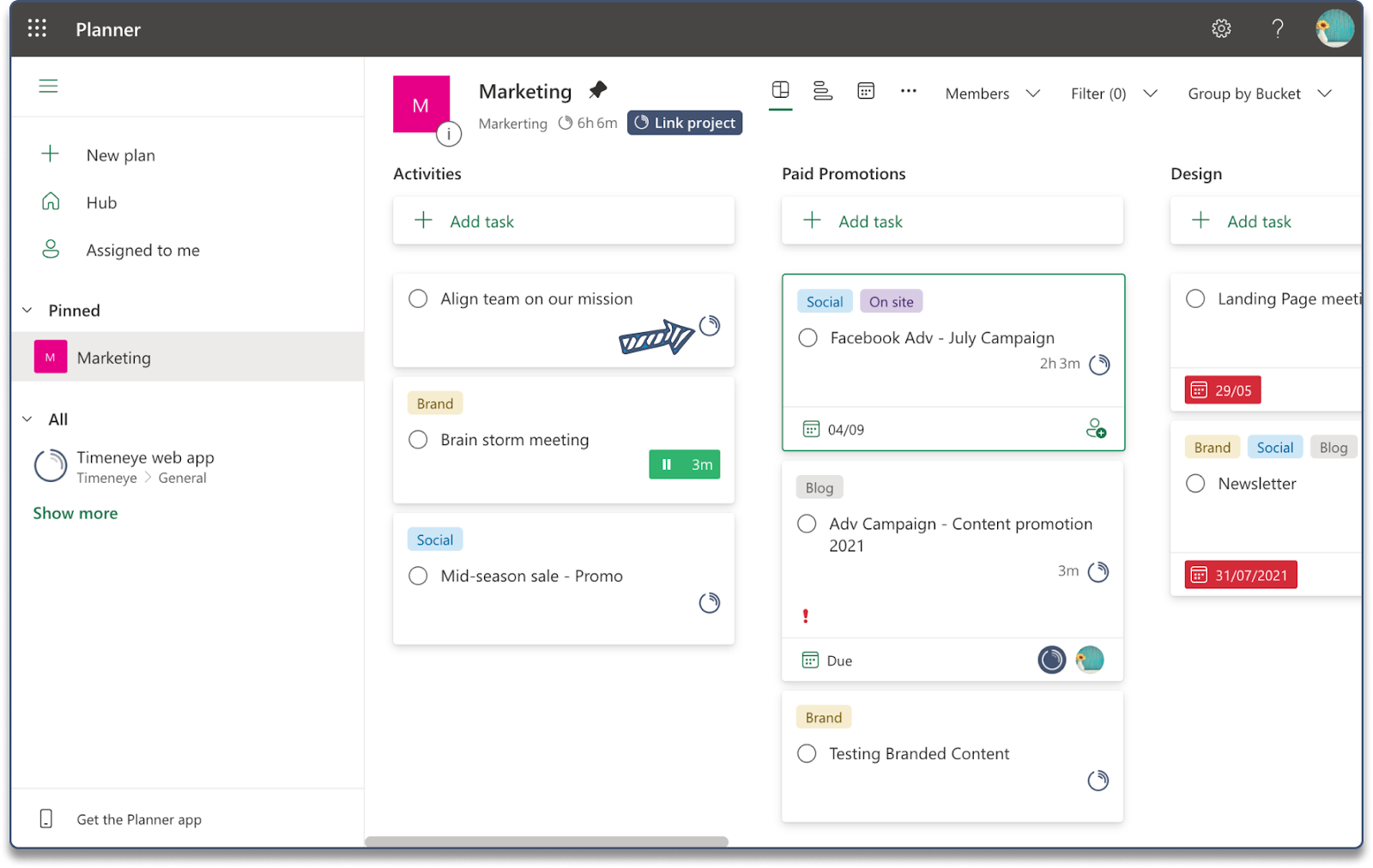
Microsoft Planner, as also other apps that integrate with Timeneye such as Google Calendar and Outlook Calendar, contains a calendar since it is one of the main and most useful planning tools for employees and managers.
It is up to them to fully focus on a calendar app (Google Calendar or Outlook Calendar) or, instead, rely on a project management software such as Planner to better manage their time project.
To be good at planning and organizing, we sometimes need a little help and some time management tips. It is here that Timeneye comes in for us. Timeneye is a time tracking software that perfectly integrates with useful calendar apps such as Outlook Calendar and Google Calendar.
If you use Google Calendar or Microsoft Outlook, Timeneye will make your life easier by importing events as suggested time entries, it will track the time you spent on meetings and it will help you organize your workload.
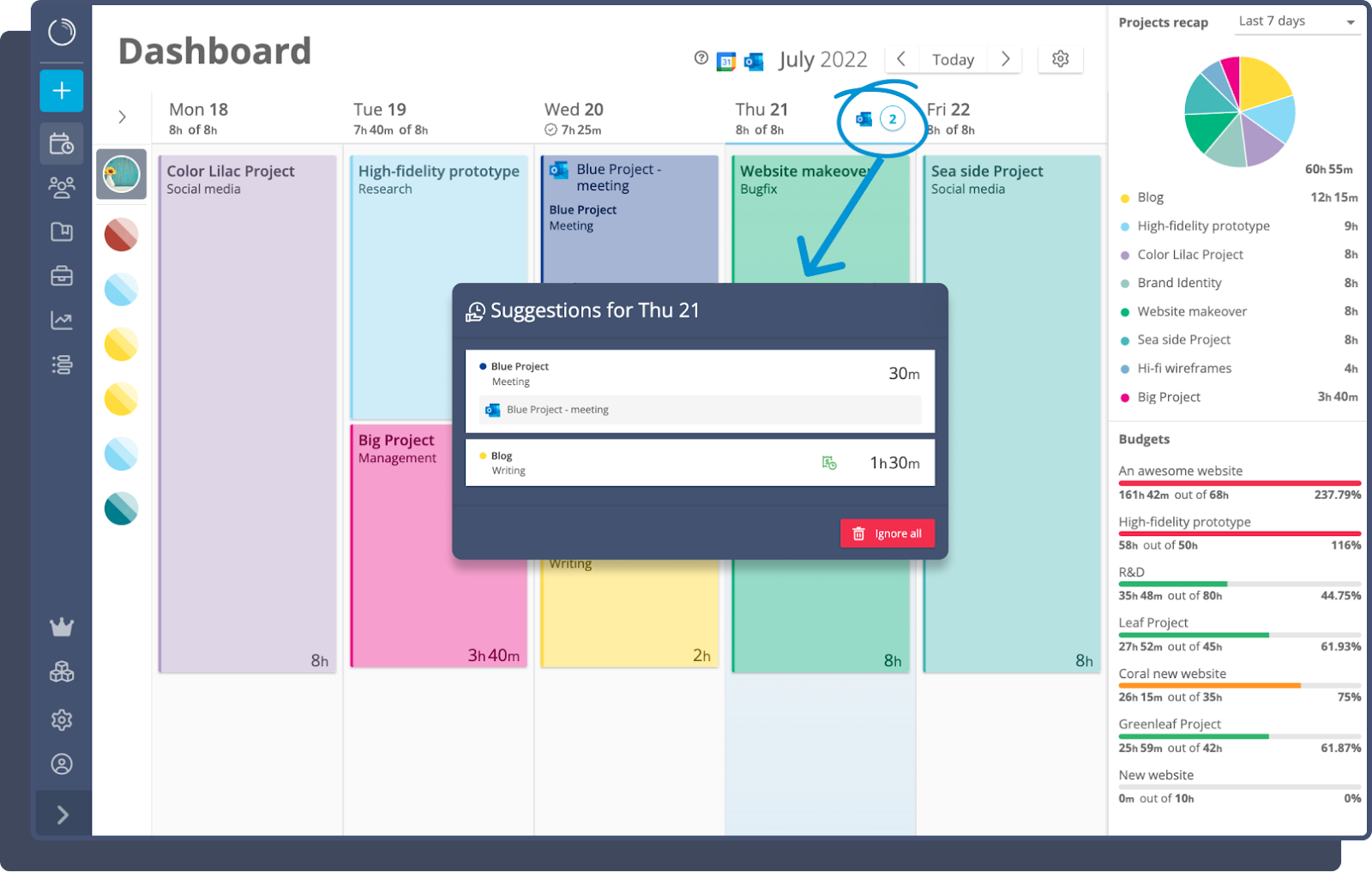
But even if you are not using one of these apps, Timeneye can make your life easier when it comes to planning and organizing. How?
Providing you with an easy-to-use dashboard where you can handle your workflow and see your project split into phases to better focus on a task; we will better see this feature in the next step!
After having planned a project and have decided how to organize ourselves, we have to have clear in mind what our goals are and what we want to reach (hand in the project to the client before the end of the month, outsource less important tasks, etc.) and decide what needs to be prioritized.
What are our priorities? What needs our attention and what, instead, can wait?
It is here that the Eisenhower matrix comes to use since it helps us to evaluate what needs our attention first and what, instead, can wait.
The Eisenhower matrix suggests we DO what is both urgent and most important, DELEGATE what is urgent but not important, PLAN in the calendar what is important but it is not urgent, and DELETE what is not important and not even urgent.
Timeneye helps users to set goals and prioritize what can be considered important and what can wait.
Indeed, Timeneye helps users to monitor their projects, stay on budget and visualize their daily effort.
When a project has been handled in Timeneye it is possible to name it and choose an identifying color, set a budget, and divide it into phases.
It is this latest feature the one that better helps the user to prioritize activities while also allocating them to team members.
Diving a project into phases allows the user to take a closer look at its ongoing projects, understanding what is going off trials, what is taking too long, and what, instead, needs to be prioritized.
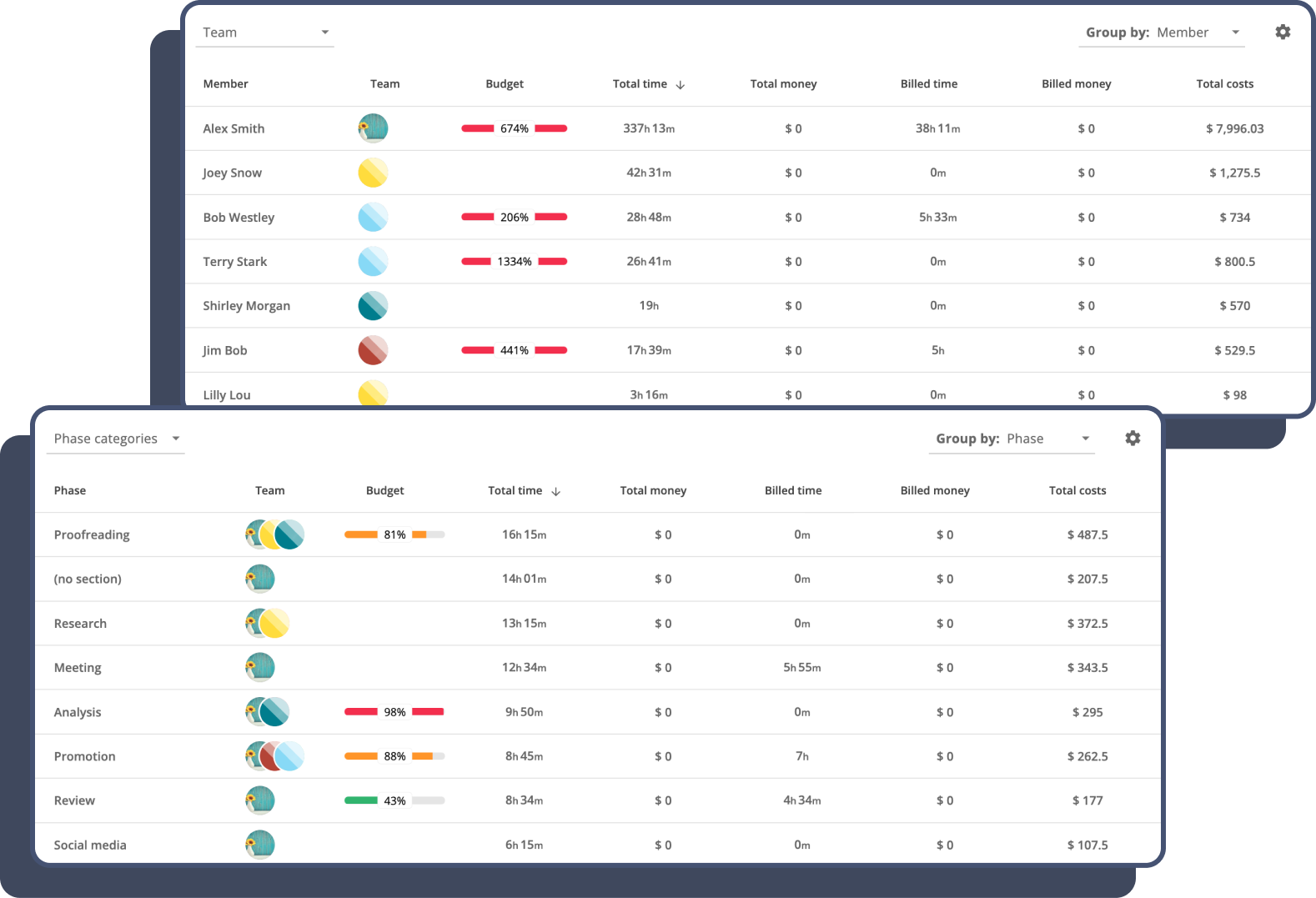
Taking care of everything is not always a good idea since, as mentioned before, not all activities can be considered equally urgent or important.
Delegating might be the answer and saying no should be considered as an unpolite way to manifest uninterest but, instead, a clear and honest way to value your time.
Delegating is not always easy but it is important to do it so you can focus on what needs your attention and what can be outsourced.
If you are not used to delegating activities to someone else it might be helpful to understand how much a task can be considered difficult or easy to delegate, to whom you can delegate it, how much money it would cost, and if it is the case to outsource it.
Ah, and start with the easiest task to delegate so you won’t be worried about its executions if the deadline is met, etc. Then you can, step by step, start delegating more difficult tasks.
Timeneye perfectly integrates with project management software such as Jira, Basecamp, Asana…
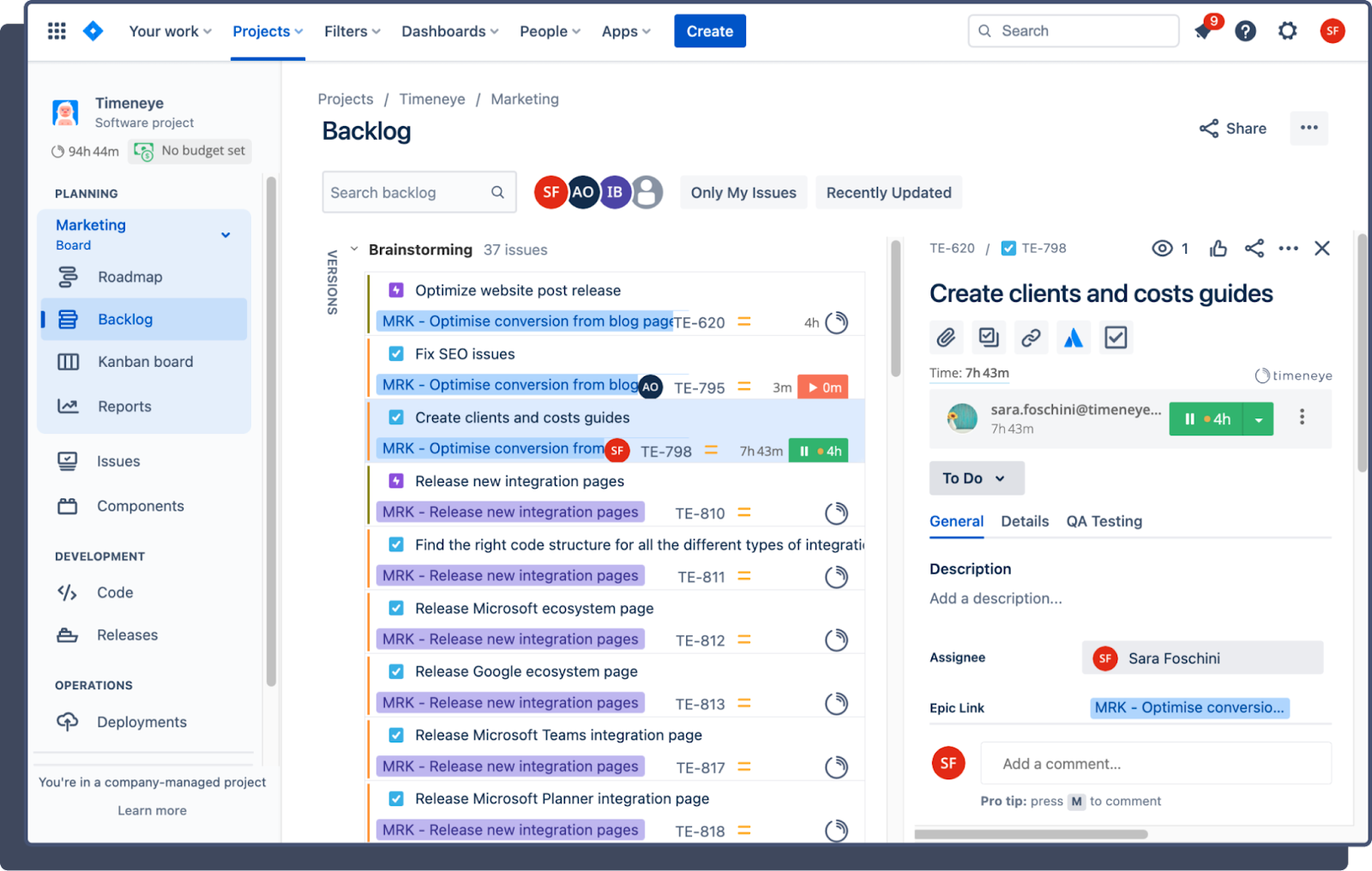
Once you have integrated Timeneye with your project management tool, you can start assigning tasks to team members and, with Timeneye, it will be possible to divide them into phases and check the time they will take.
Handling a project with many phases while also coordinating the other teammates’ activities is not easy and it can also be quite confusing if there is a lack of communication.
Timeneye is a time tracking software that easily integrates with collaborative team apps such as Microsoft Teams, Google Gmail, and Microsoft To Do…
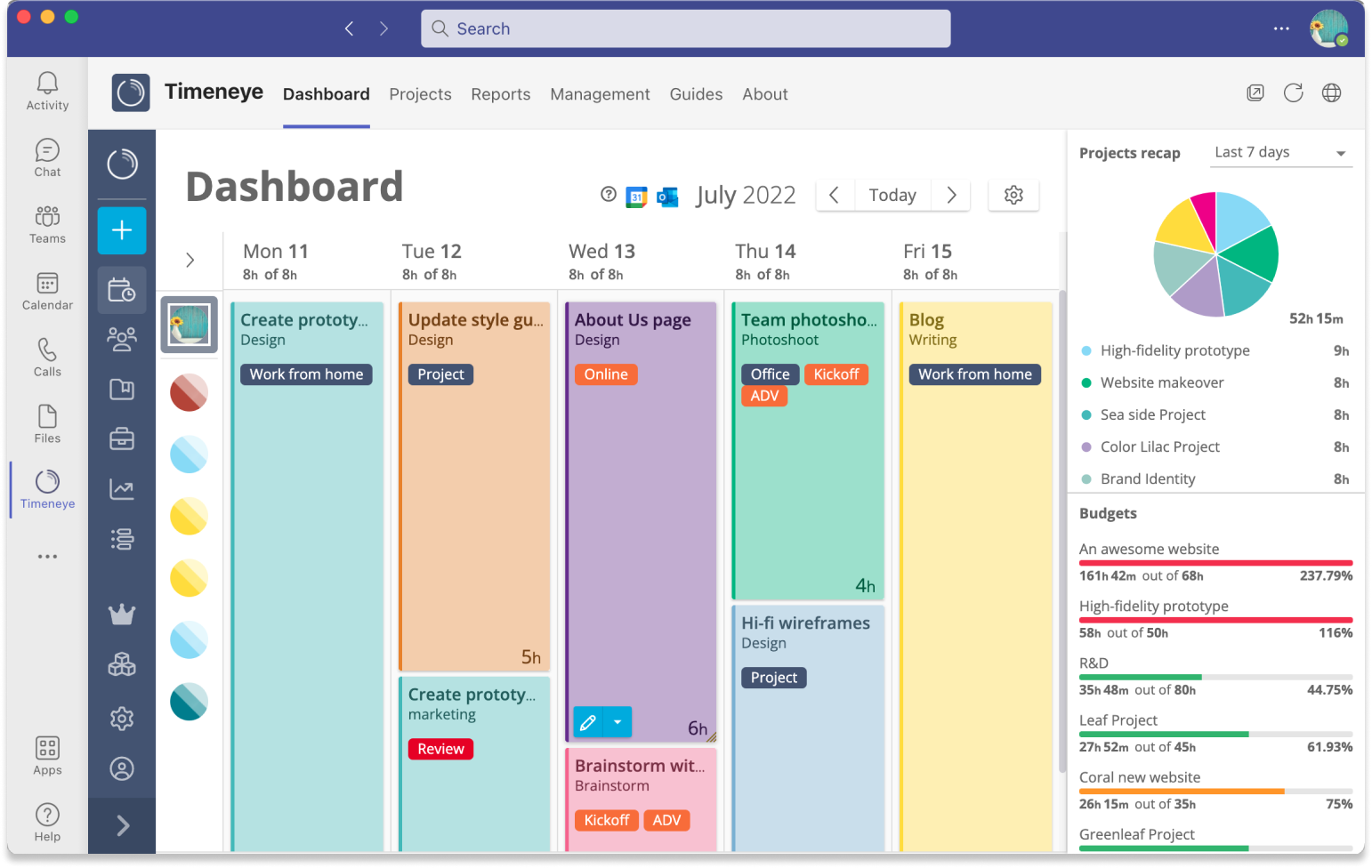
Integrating Timeneye to Microsoft Teams allows you to organize meetings, and workshops and chat with colleagues while the time gets tracked and stored in the cloud. After a meeting on Teams, you migrate with your team to Microsoft To Do, you can now assign tasks and, when completed, check them off!
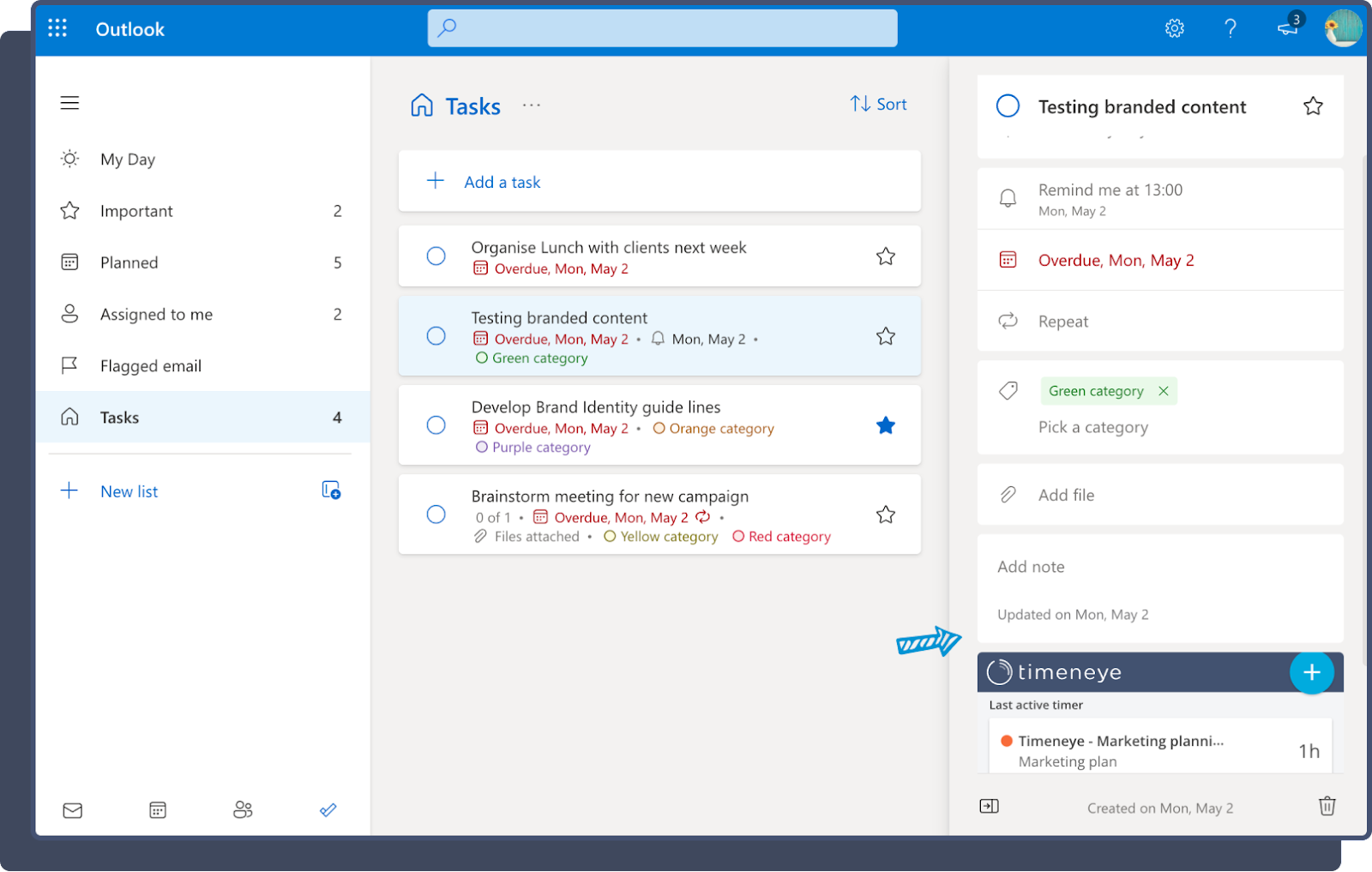
Integrating Timeneye to Gmail helps the user to track and save the time spent while answering emails (and for some of us this activity might take more than one hour!).
Your time is precious, especially the one you spend communicating with your colleagues!
Creating a routine means being flexible. I know, I know, it seems contradictory but trusts me, it is not.
When you focus on an activity every day, approximately at the same time, and you write it down in the calendar, your teammates expect you to contact them around that time in case you are working on something common.
This implies that you will receive immediate feedback and you will be able to go on or change direction before it is too late!
It takes discipline to put in agenda, every day at a certain time, a project activity but it also takes flexibility to expect to receive sooner feedback with the possibility to change everything from a to z.
Timeneye helps you create a routine thanks to the so-called Suggested Entries. An Entry is a section in the workspace where the time data gets stored and it is possible to export it in detailed timesheets.
Your Timeneye web app starts to learn from your entries addressing your activities to a daily routine and, in this way, it makes pop up a suggestion in your calendar dashboard.
In case you do not want Timeneye helping you out with Suggested Entries you can easily modify them from the Register Time dialog.
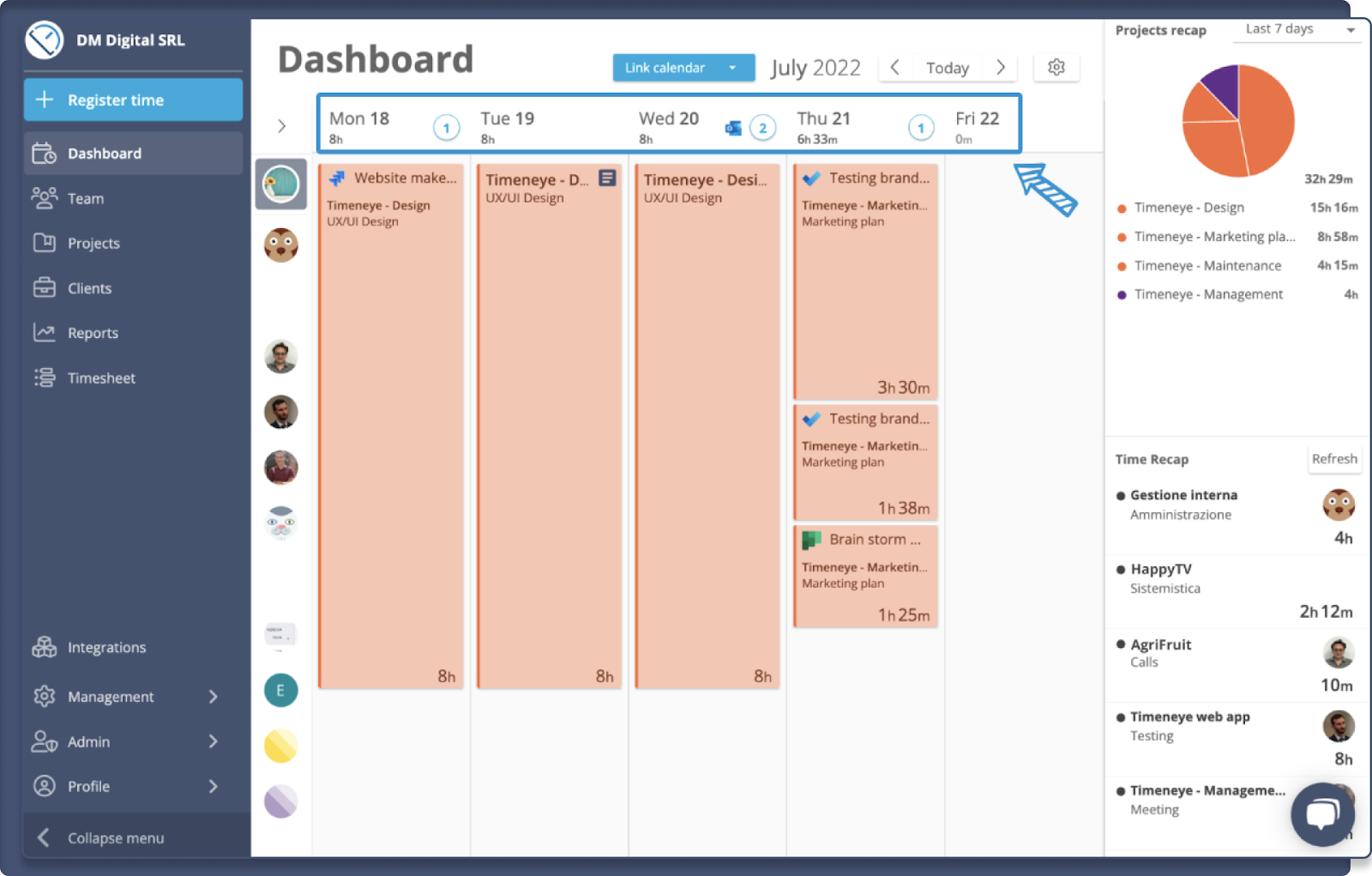
When we talk about good time management skills we usually think that multitasking might be the best, achievable way to get more done in less time. But it is not like that!
Focusing on many activities, also very different from each other, at the same time might be confusing and distracting.
Our brain is at its greatest capacity when focused on one single thing and getting it done.
Timeneye helps you do so thanks to the possibility to split a project into phases and keep an eye on each of them.
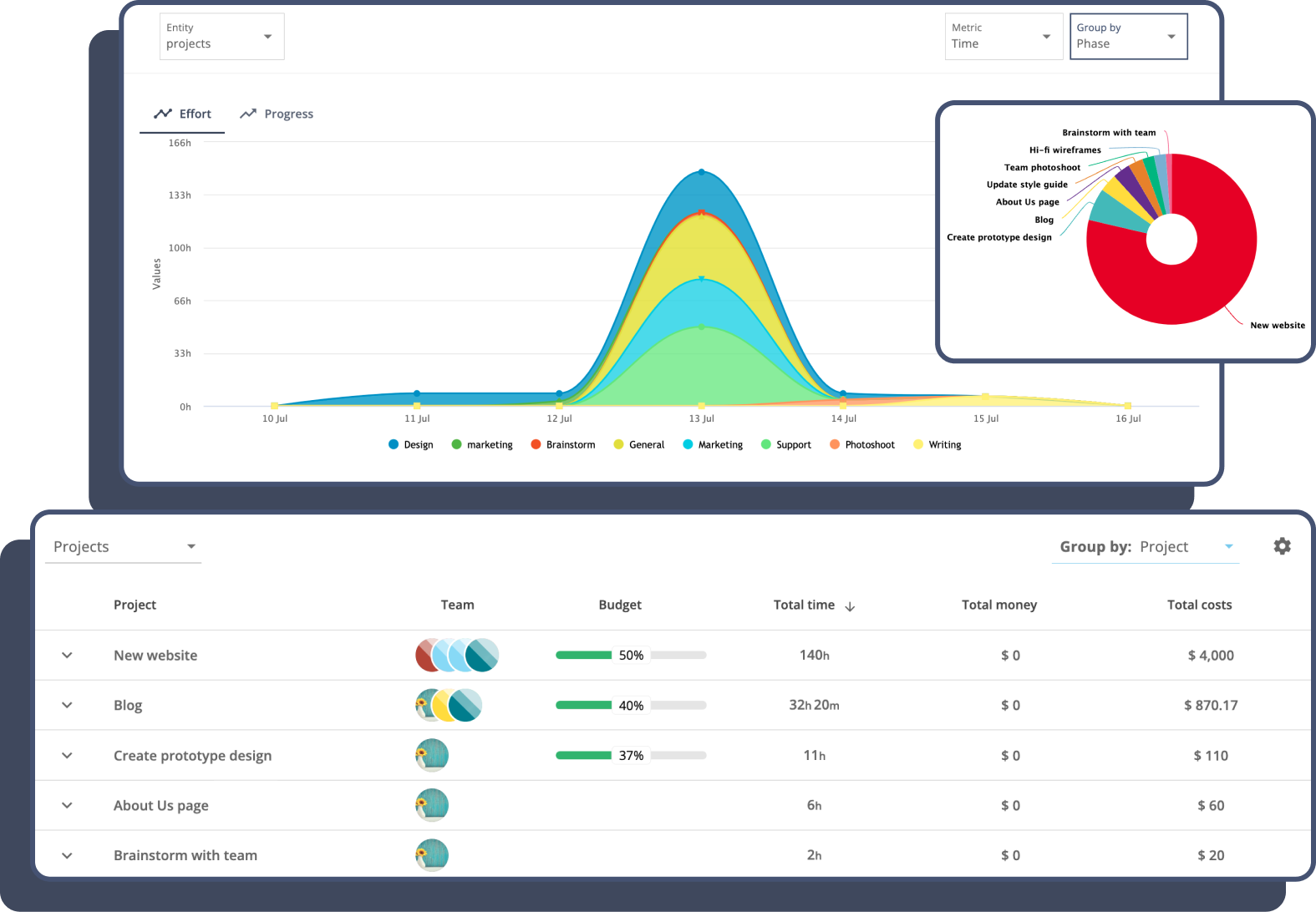
When we talk about productivity and effective time management we tend to forget the importance of mental health and it has become quite common to hear the word “productivity” close to the burnout one.
Handling a project is not easy, especially when we also have to manage or get along with other people’s work and a deadline is approaching.
It is important to take some breaks during your day and say no, as well as delegate tasks when something is not important. Get a coffee or a fresh glass of water, avoid looking at your phone and, if you get the chance, get outside for a little walk.
You can do it by booking some break slots on your Timeneye calendar so nobody will ask you for a brief call or, also, you will hesitate to do some other working activities with your brain off.
Remember that to say no does not mean being unpolite; it means valuing your time!
Facing problems, we hope for your small ones, is part of the business.
Especially when you handle a complicated project for a particular client.
Usually, problems happen during chaotic moments, when activities seem to add up and deadlines approach.
Timeneye has been thought to ease the user’s working life thanks to automatic features such as email reminders, report automation, and budget threshold.
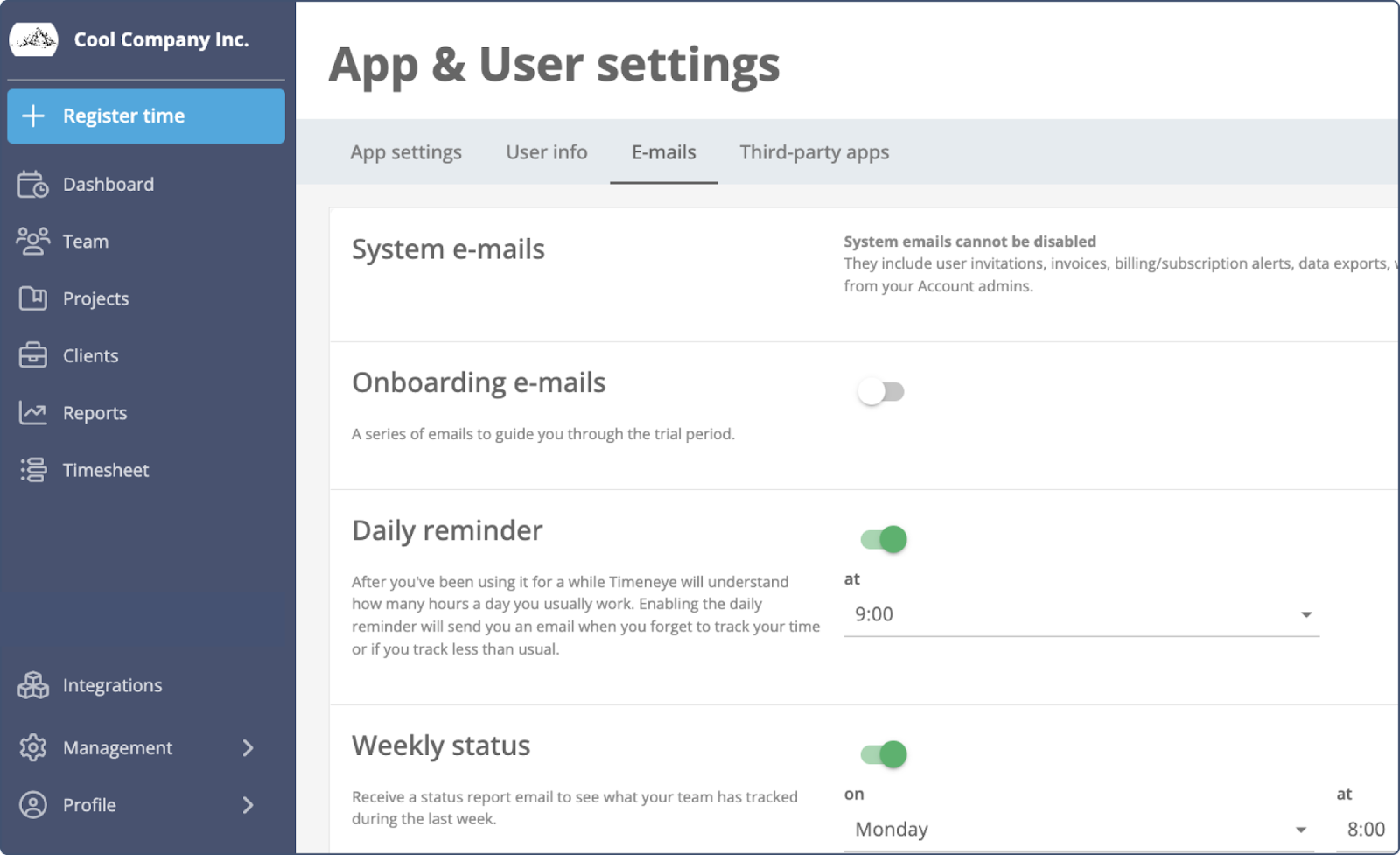
You can set email reminders in case a project’s phase is taking too long as you can also set a date on which you wish to receive your custom report with all of your time and project info.
When you open a project, you establish a budget that should be respected. When this does not happen, with Timeneye you get the chance to receive an alert that warns you that things are not exactly going as expected.
It is important, even if the client did not mention it, to have a deadline even if it is just for yourself.
When you have a clear mind when a task needs to be done, you start properly managing your time, avoiding postponing the activity or indulging in unnecessary rework.
With Timeneye you can set a project deadline and receive an automatic email that reminds you to be aware of the deadline and not indulge in overdoing things around.
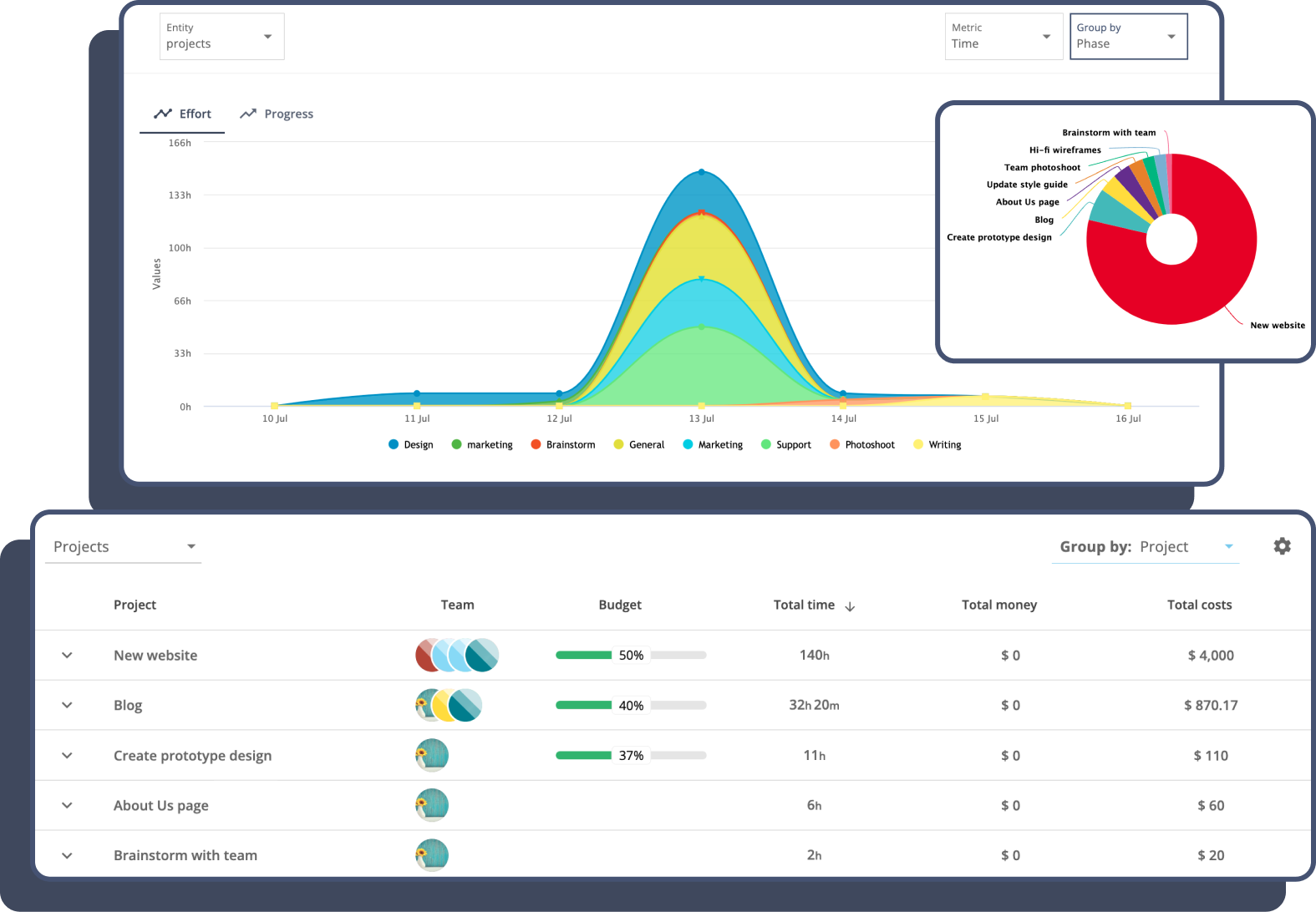
We already talked about the importance of resting in stress management.
Being productive does not mean work, work, and work but having the capacity to focus on work when it is time to do so and rest when our body and mind need it.
So shut your laptop down and take the time for yourself but before doing so, make your working life easier while being in control of your time.
Sign up for Timeneye and start your free 30-day trial!
Managers who need to measure employee productivity can try a team time audit. Learn now a time tracking tool like Timeneye can help with that.
Timeneye has developed easy time tracking for Jira to help you keep on time and keep on track. Powered by our free Timeneye browser extension
Discover the new Timeline View in Timeneye, enabling precise time tracking with start and end timestamps for better time management and reporting.